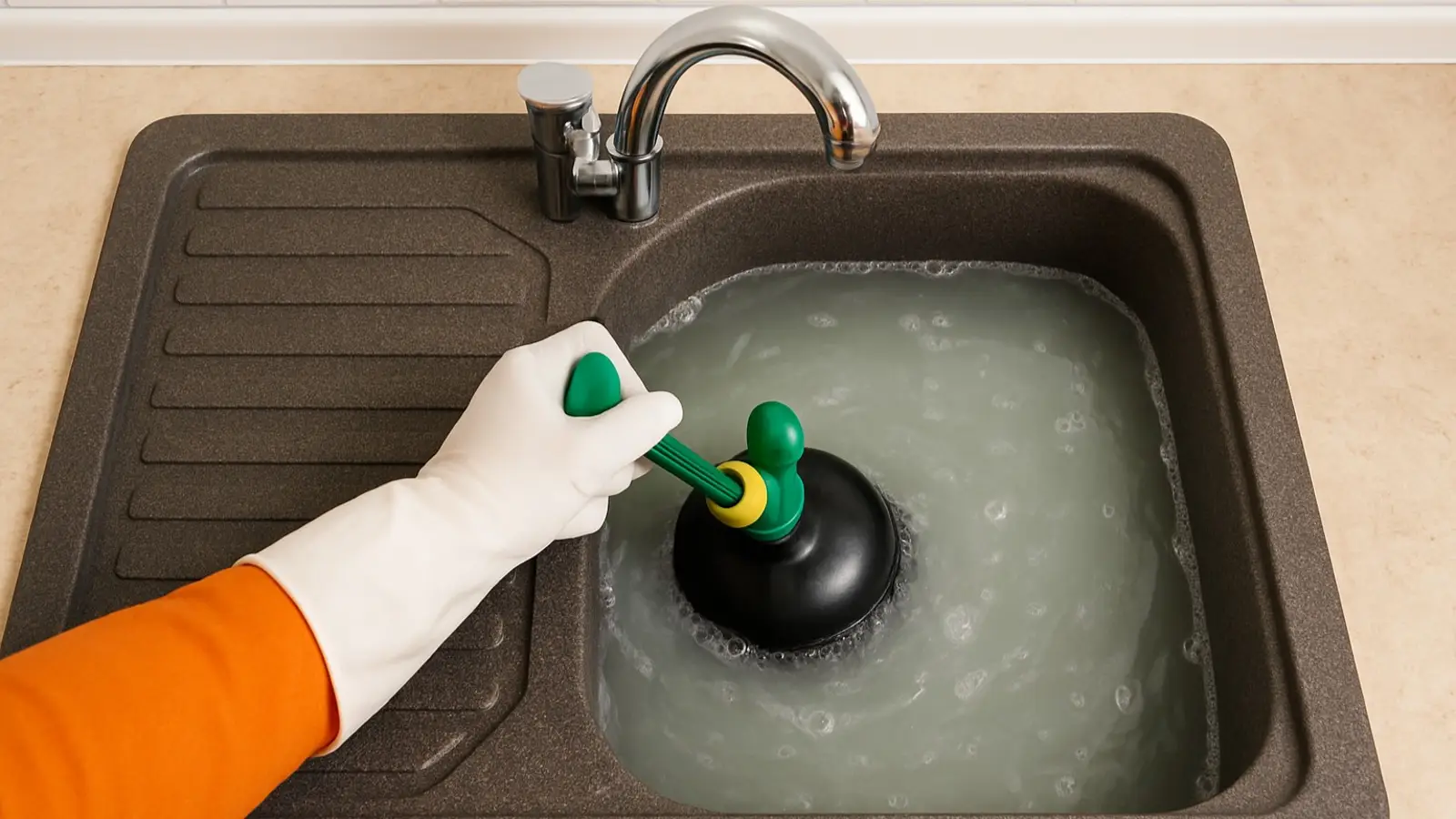How to Unclog a Sink: Tools, Home Remedies & Prevention
Clear a clogged sink with a plunger, cleaning the trap, a drain snake, baking soda and vinegar, or chemicals—plus prevention tips and when to call a pro.

Generated by Dall-e
A blocked sink is hardly rare—most of us have faced it at least once. In kitchens, food scraps and grease often ride the water down the drain and build up; in bathrooms, hair, soap residue, and cosmetics are the usual culprits. The good news: in most cases you can fix the problem yourself. Here’s what specialists suggest, from the gentlest measures to heavier-duty options, plus a few habits that help you avoid a repeat.
Mechanical fixes first
Start with a plunger. It creates pressure that pushes a blockage through or breaks it apart. For best results, cover the overflow opening (if your sink has one) with a damp cloth, then make several firm, quick pumps. Rinse the drain with hot water afterward.
If that doesn’t do the trick, the clog may be sitting in the trap (siphon). Place a bucket under the sink, unscrew the bottom of the trap, and remove the gunk—often a mix of grease, food particles, or hair. Reassemble the trap and test the flow.
For tougher blockages, a plumbing cable (drain snake) helps. Feed it gently into the drain and rotate as you advance to break up the plug. Finish with a hot-water rinse.
Pantry methods that work
Sometimes heat alone is enough. Carefully pour boiling water to dissolve greasy buildup—just be cautious with plastic pipes and avoid water that’s too hot for the material.
A more active approach is baking soda followed by vinegar. Pour about 100–200 grams of baking soda into the drain, add a glass of vinegar, wait 15–30 minutes for the reaction to run its course, then flush with hot water. This can help with blockages and odors.
Another low-effort option is baking soda mixed with salt in equal parts. Send the blend down the drain and leave it overnight; in the morning, flush with boiling water. This is useful for prevention and shallow clogs.
Store-bought chemicals—handle with care
Commercial cleaners—such as “Krot” and similar products—come as liquids, gels, or powders and act fast. Use them exactly as directed, protect your hands and eyes, and keep the space well ventilated. Don’t overdo it: frequent use can damage pipes, especially older metal ones.
When it’s time to call a professional
If water still refuses to drain after these steps, the blockage may be deep or complicated and require specialized equipment. Clogs that return again and again also point to underlying pipe issues. In those cases, it’s better to bring in a pro.
Simple habits to prevent clogs
On the kitchen side, use a mesh strainer to catch food remnants, and don’t pour fat into the sink—even when it’s liquid. As it cools, it forms a film that narrows the pipe over time. In the bathroom, remove hair from the drain regularly and use filters there, too.
A periodic flush with hot water—or an occasional baking soda and vinegar treatment—helps keep drains clear and reduces the chance of unpleasant surprises.
A blocked sink isn’t cause for panic. Most clogs yield to basic tools and simple mixtures in short order, and a little routine prevention keeps your drains running smoothly.
